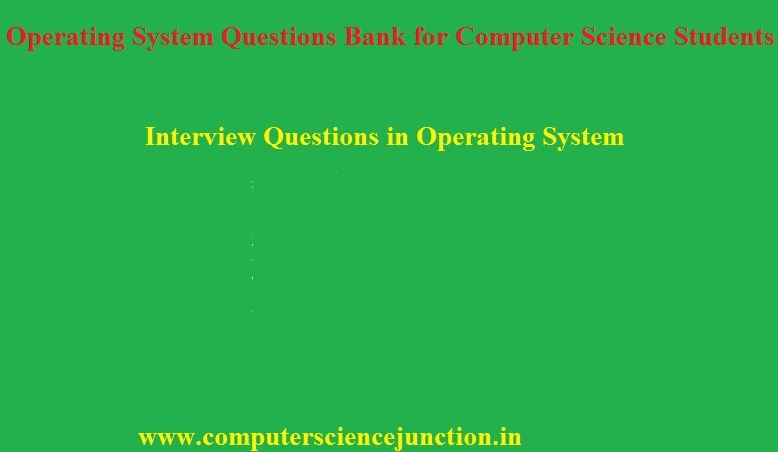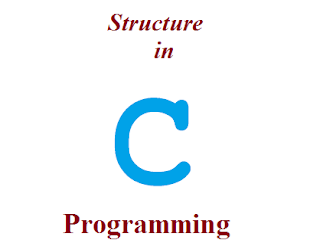Table of Contents
Questions Bank for Operating System Subject
Unit 1
Type 1. 2 Marks Questions
(1) What is Spooling?
(2) What is system call?
(3) What do you mean by kernel?
(4) What is Operating System?
(5) What is reentrant kernel?
(6) Symmetric and Asymmetric Multiprocessing.
(7) Write the difference between multiprogramming and multiprocessing.
(8) What is shell?
Type 2: Short Note Type
Write the short note on the following
(1) Real Time System
(2) Multiprogramming system
(3) Multiprocessing System
(4) Batch Operating System
(5) Time sharing System
Type 3: Explanation Type
(1) Explain the different functions of operating system.
(2) Explain the Layered Architecture of Operating System.
(3) Write the difference between Microkernel and Monolithic kernel ? Explain monolithic and microkernel architecture in detail.
(4) What is system call ? Explain any four system call.
(5) Describer the various components of operating system.
(6) Describe the services of operating system.
Unit 3
Type 1: 2 Marks Questions
(1) Define Multithreading.
(2) Write the difference between process and Thread.
(3) What is scheduler? Define short term scheduler, long term scheduler and mid term scheduler.
(4) What is cpu scheduling?
(5) Draw process state transition diagram.
(6) What is PCB?
(7) What do you understand by Process Address space.
(8) What is Deadlock? Write the difference between deadlock and starvation.
(9) Write the difference between User Level Thread and Kernel Level Thread.
(10) Write the difference deadlock avoidance, deadlock prevention and deadlock detection.
(11) What is safe sequence ?
(12) Write the difference between preemptive and non preemptive cpu scheduling.
Type 2: Short Note Type
Write short note on the following
(1) Multilevel feedback Queue Scheduling.
(2) Multilevel Queue Scheduling.
(3) Context Switch.
(4) Multiprocessor Scheduling.
(5) Resource Allocation Graph.
(6) Deadlock Detection
(7) Recovery from deadlock.
Type 3: Explanation Type
(1) Explain the performance criteria of cpu scheduling.
(2) What is Thread ? Explain different Thread Models.
(3) Explain Process I/O and Burst Cycle.
(4) Explain different characteristics of deadlock.
(5) Explain different deadlock handling mechanism in detail.
(6) What is deadlock avoidance? Explain Banker’s Algorithm for deadlock Avoidance.
(7) Explain different types of CPU scheduling algorithms with their advantages and disadvantages.
Type 4: Problem Solving
(1) Problem based on CPU Scheduling Algorithms like FCFS, SJF, SRTF, ROUND ROBIN, PRIORITY ( preemptive and non preemptive) to find out the waiting time turn around time , average waiting time and average turn around time.
(2) Resource Allocation Graph Based to find the deadlock in given graph.
(3) Bankers Algorithm Based to find out the safe sequence , need matrix and request for additional resources can be granted or not
Unit – 2
Type 1 : 2 Marks Based Questions
(1) What do you understand by critical section.
(2) Explain the principle of concurrency.
(3) Write the difference between parallel execution and concurrent execution.
(4) Write the advantages of concurrent execution.
(5) What is semaphore?
(6) What is critical section problem?
(7) What are necessary requirements for the solution of a critical section problem?
(8) What is mutual exclusion?
(9) Write the difference between Binary Sempahore and Counting Semaphore.
(10) What are different Semaphore primitives?
Type 2: Explanation Types Questions
(1) What do you understand by Inter process Communication? Explain Shared Memory and message passing methods of IPC.
(2) Describe the Producer-consumer problem. Also write the solution of Producer consumer problem.
(3) Write the Dekker’s solution to solve the critical section problem.
(4) Write the Peterson solution to solve the critical section problem.
(5) Write the Implementation of Binary and Counting Semaphore.
(6) What is Lock variable? How the lock variable used in Test and Set instruction.
(7) Describe the Dining Philosopher Problem .also write the solution of this problem.
(8) Describe the Sleeping Barber Problem. Also write the solution for sleeping barber problem.
Type 3: Problem Solving
(1) Problem based on Counting Semaphore.
Unit 4
Type 1: 2 Marks Questions
(1) What is Bare Machine?
(2) What is swapping?
(3) Write the difference between paging and segmentation.
(4) What is difference between paging and demand paging.
(5) What is Memory Management Unit?
(6) What do you understand by logical address and physical address?
(7) Write the difference between internal fragmentation and external fragmentation.
Type 2: Short Notes Type Questions
Write the short note on
(1) Memory Management
(2) Resident Monitor
(3) Virtual Memory.
(4) Paged Segmentation
(5) Address Binding
(6) Dynamic Relocation
(7) Dynamic Loading
(8) Cache memory organization
(9) Locality of reference.
Type 3: Explanation Type
(1) Explain the Multiprogramming with fixed partition and variable partition.
(2) How the protection is provided to main memory in contiguous allocation.
(3) What do you understand by paging? Explain with example.
Or
Explain the hardware support to paging technique.
Or
Explain the process of converting the logical address to physical address using paging technique.
(4) What is TLB? Explain the hardware support with TLB for paging technique.
(5) Explain the segmentation with example.
(6) Explain the contiguous memory allocation methods ( Best Fit, Worst Fit, First Fit)
(7) Explain the demand paging with suitable example. How the performance of demand paging is measured?
(8) What do you understand by page replacement algorithms? Explain different page replacement algorithm with suitable example.
(9) What is thrashing? Explain the causes of thrashing.
(10) How to overcome thrashing ?
Or Explain working set model technique with example to reduce thrashing.
Type 4: Problem Solving
(1) Best Fit, worst Fit and first fit allocation based.
(2) Logical address space, physical address space, page offset based.
(3) Segmentation based
(4) TLB or Effective memory access time based
(5) Page replace algorithms Based
Unit 5
Type 1 : 2 Marks Questions
(1) What are different types of file?
(2) What are the attributes of a file?
(3) What are different types of I/O device based on communication.
(4) What do you understand by I/O Management?
(5) Write the difference between software interrupt and hardware interrupt.
Type 2: Short Note type
(1) Programmed I/O
(2) DMA
(3) Interrupt
(4) Pooling
(5) Disk Structure.
(6) Access Matrix
(7) I/O Buffering
(8) RAID
(9) Bit Vector
(10) Boot Blocks
(11) File Sharing
Type 3: Explanation Type
(1) Explain different type of file access methods.
(2) Explain different type of allocation methods of file records on disk
Or Explain contiguous allocation, Index Allocation or Linked allocation methods
(3) How the file records are mapped or stored on disk block?
(4) What do you understand by directory? Explain different levels or types or structure of directory.
(5) Explain the process of Directory Implementation.
(6) Explain the security and protection issues in file system.
(7) What do you understand by disk scheduling? Explain different types of disk scheduling algorithms in detail with suitable example.
Type 4: Problem Solving
(1) Disk scheduling algorithm based
Keywords: interview questions from operating system,unit wise questions from operating system, operating system interview questions, operating system questions for university exams







